Sri Lanka to build £11 billion metropolis to double size of its capital, Colombo
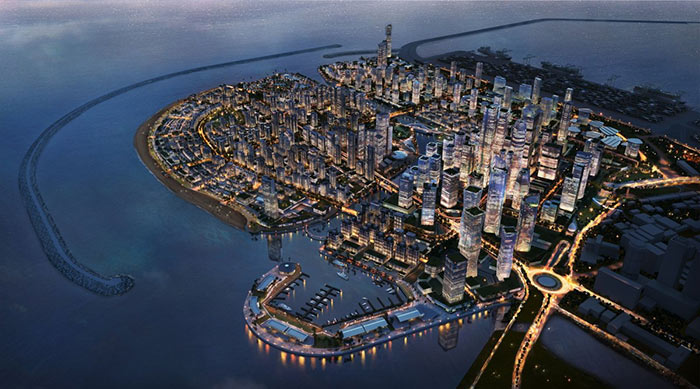
Sri Lanka’s $1.4 billion (£1.07 billion) Port City development has elicited parallels to numerous major urban centres. At 665 acres, the project is about the same size as central London, but its design resembles that of cities like Hong Kong, Singapore, and Dubai.
A decade ago, the idea of a Sri Lankan city that rivalled the world’s leading financial hubs seemed implausible. From 1983 to 2009, the nation was ravaged by a brutal civil war between its military and an insurgent group called the Tamil Tigers.
By the end of the conflict, hundreds of thousands of civilians had been killed and the city had spent more than $200bn (£153bn) on war costs.
Less than 10 years later, the nation has devised a plan for bringing jobs and economic opportunity to its capital city, Colombo. The most populous city in Sri Lanka, Colombo has about 750,000 residents in its urban core.
Through the development of a new metropolis inside the capital, officials estimate that Colombo could eventually double in size.
Though the concept of Port City originated in 2004, its plans were delayed by the war. Sri Lanka went on to see an influx of Chinese investment, which the country put towards major infrastructure improvements.
The partnership ran into trouble when Sri Lanka had difficulty repaying its debt, however, while China was accused of using its investments to wield political influence.
In 2014, Prime Minister Ranil Wickramasinghe suspended the Port City project, citing concerns about damage to the coastline. This angered the project’s investor, China Communications Construction Company, which claimed to be losing $380,000 (£290,000) a day while the development was in limbo.
By 2016, the plan was back in motion with a new set of environmental protections.
According to the site’s developer, China Harbour Engineering Company, the project is still on track to complete its reclamation efforts and the first phase of infrastructure by 2020. Port City is set to be finished in 2041, at which point its costs could reach $15bn (£11.5bn).
Here’s what it might look like in the future.
To build the city, developers are using dredgers to gather up sand from the bottom of the ocean.
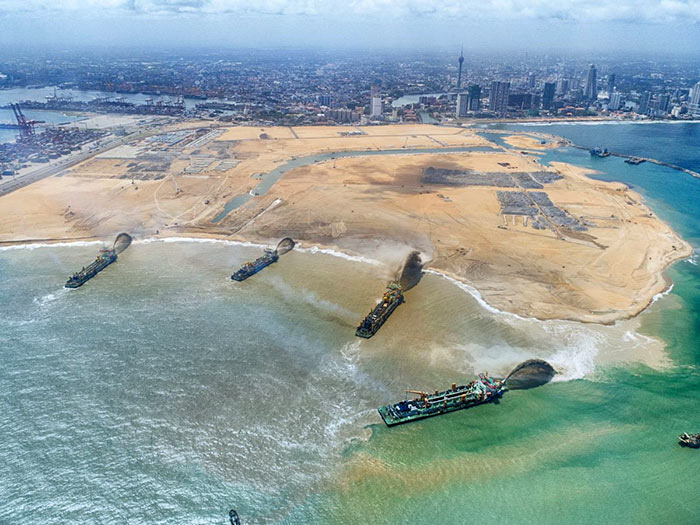
Drone footage of the project’s four dredgers (CHEC Port City Colombo (Pvt) Ltd)
China Harbour Engineering Company plans to add 65 million cubic metres (about 17 billion gallons) of sand along the shore.
Environmental groups have raised concerns about the destruction of aquatic life, which could damage the livelihood of local fishermen. But developers contend that dredging won’t pose a threat.
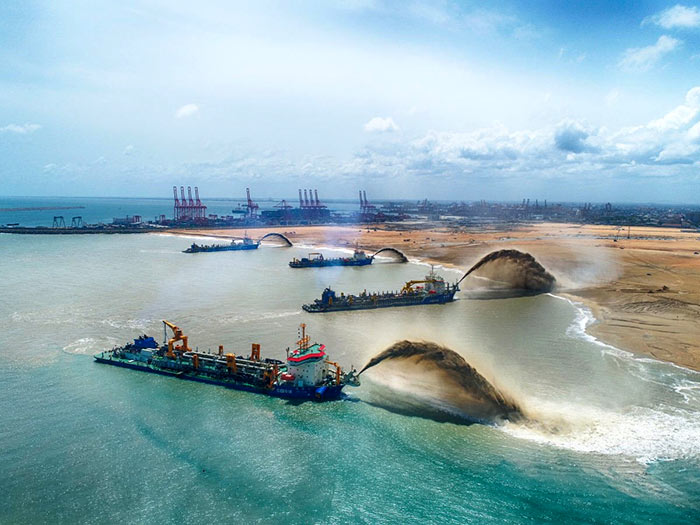
Drone footage of the project’s four dredgers (CHEC Port City Colombo (Pvt) Ltd)
China Harbour Engineering Company recently obtained a permit allowing it to dredge 5 kilometres from the coastline and only at depths at or below 15 meters. The organisation is also prohibited from dredging in areas near reef habitats or fishing grounds.
To account for the economic cost to local fishermen, the company has set aside nearly $7m (£5.3m) to be distributed among fishing associations over three years.
Developers have completed more than 90 per cent of their reclamation efforts, putting them on track to finish by June 2019.
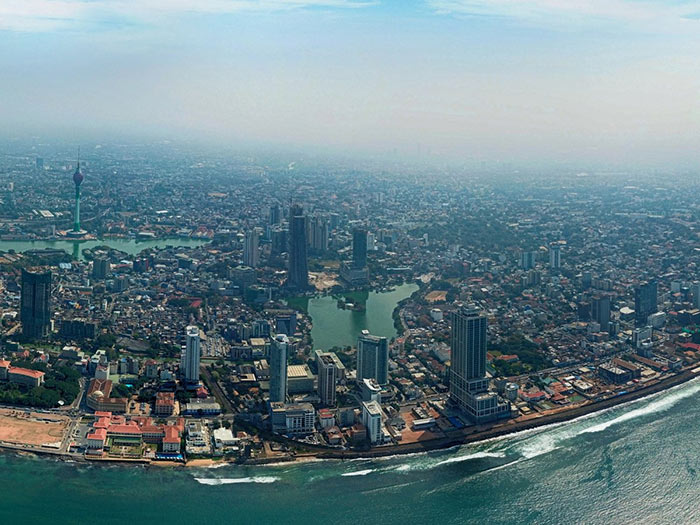
Drone footage of Colombo (CHEC Port City Colombo (Pvt) Ltd)
The project has received a $1.4bn (£1.1bn) investment, but the sand alone could cost more than double that amount.
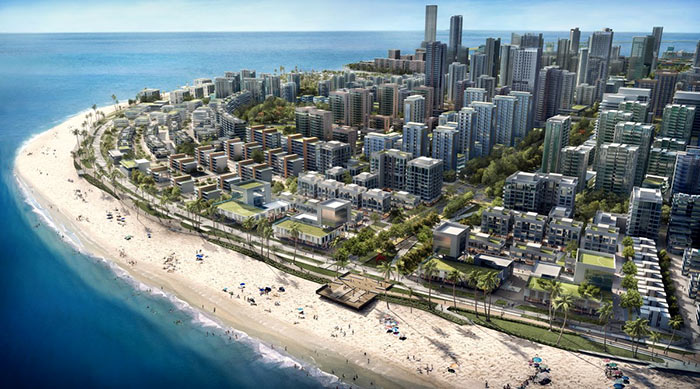
Aerial rendering of Port City (CHEC Port City Colombo (Pvt) Ltd)
Colombo’s Centre for Environmental Justice estimates that the development will require about 100 million cubic meters of sand, worth about $3.2bn.
The financial district features high-quality office space, a shopping plaza, and a cultural park.
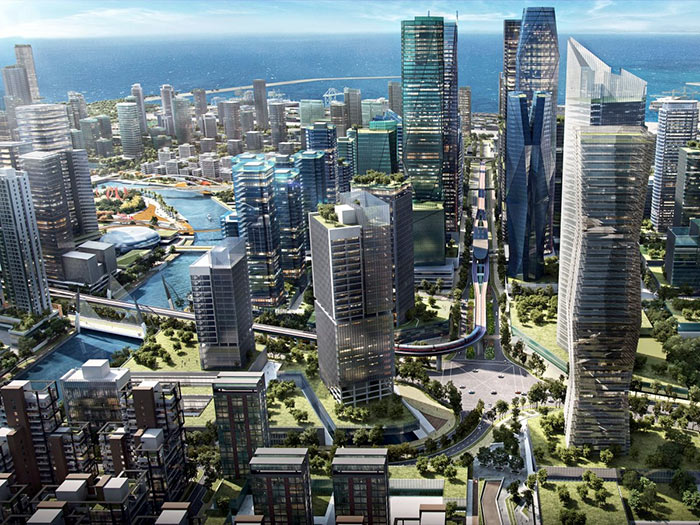
Rendering of Colombo International Financial Centre (CHEC Port City Colombo (Pvt) Ltd)
A “central park” borders the main canal, providing space for outdoor recreation and events.
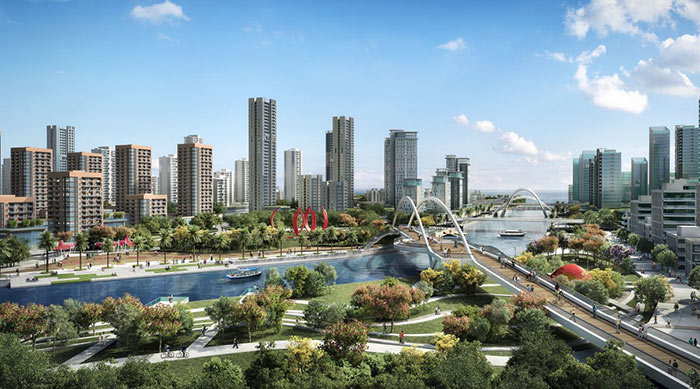
Rendering of Port City (CHEC Port City Colombo (Pvt) Ltd)
The development calls for 110 acres of public parks and 300 acres for recreation and water sports.
Building heights decrease in the direction of prevailing winds and waterfronts, allowing for increased air circulation within the city.
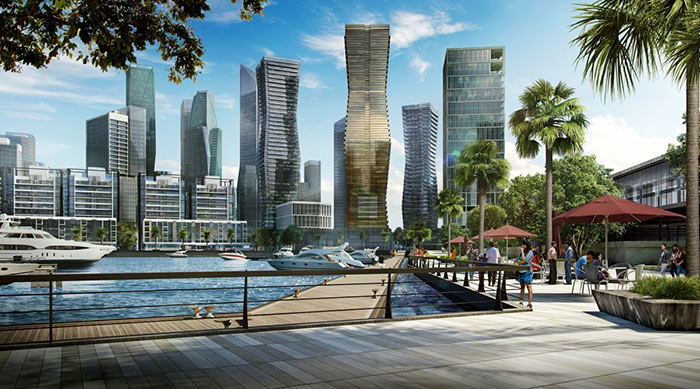
Rendering of Port City (CHEC Port City Colombo (Pvt) Ltd)
The city is designed specifically for residential and commercial use — no industrial activities are allowed.
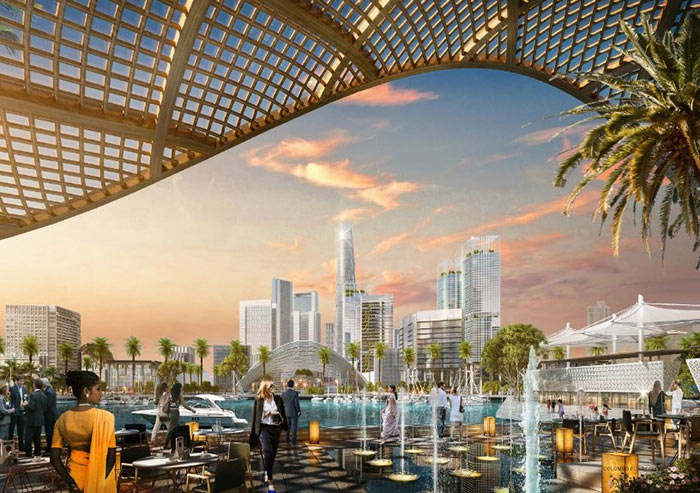
Rendering of Port City (CHEC Port City Colombo (Pvt) Ltd)
Development officials say other planned projects in Sri Lanka will satisfy the need for industrial space.
Transit developments and walkways are meant to connect residents to local landmarks like Galle Face Beach, Beira Lake, and Viharamahadevi Park.
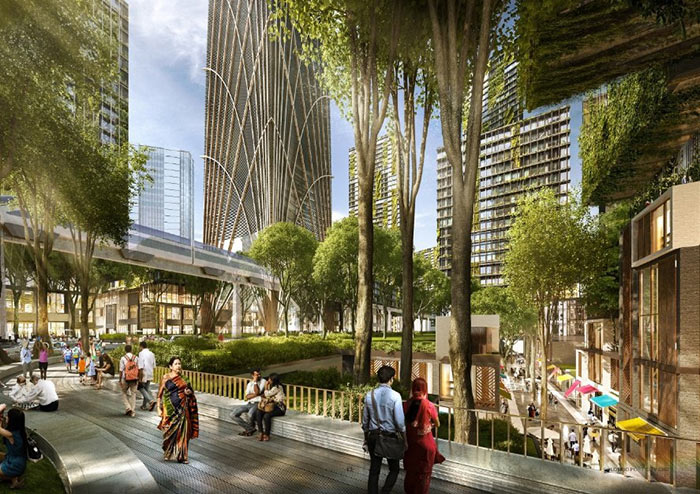
Rendering of Port City (CHEC Port City Colombo (Pvt) Ltd)
The new city is expected to host about 80,000 residents and 250,000 daily commuters.

Rendering of Port City (CHEC Port City Colombo (Pvt) Ltd)
It could be also be governed by its own legal system.

Rendering of Port City (CHEC Port City Colombo (Pvt) Ltd)
The system is still being discussed and will require approval from Sri Lanka’s parliament and council of ministers.
(Source: Business Insider – By Aria Bendix)

Latest Headlines in Sri Lanka
- Tuition teacher under investigation for student assault ignores NCPA summons March 12, 2025
- Sri Lanka maintains stance on Adani, open to investment March 12, 2025
- Doctors strike over delay in arrest of sexual assault suspect March 12, 2025
- Sri Lanka to introduce freelancer registration system for banking and financial benefits March 11, 2025
- Sri Lanka’s ‘Clean Sri Lanka’ school renovation project progresses with Tri-Forces support March 11, 2025



great….few more required like this
This filling will cause eddy currents that will erode existing land around Mannar. The erosion will extend across the island and cause division of the island into two separate islands.
The Northern Section of the Island will be the Tamil Homeland; Ealam will be born !!!!!